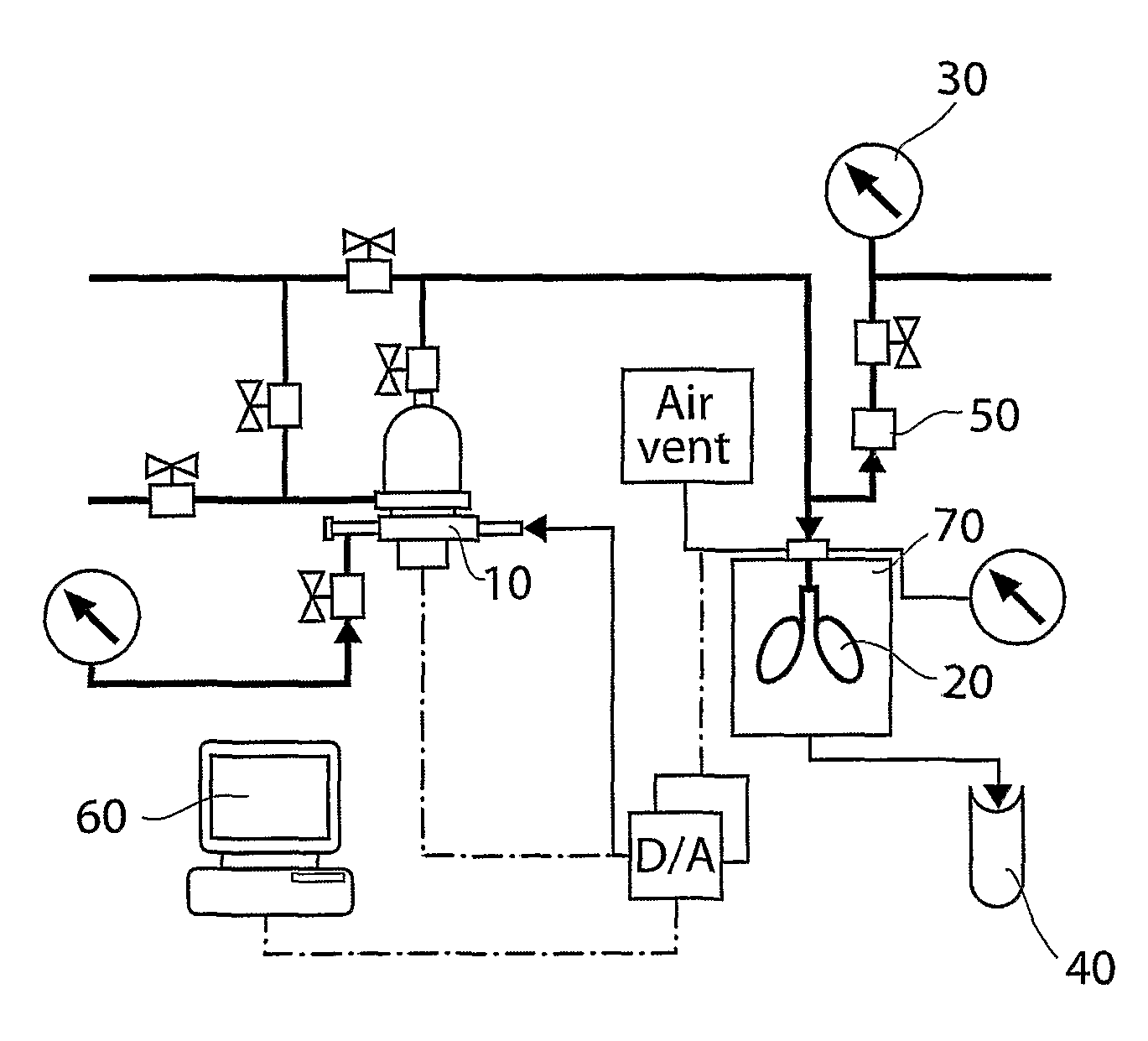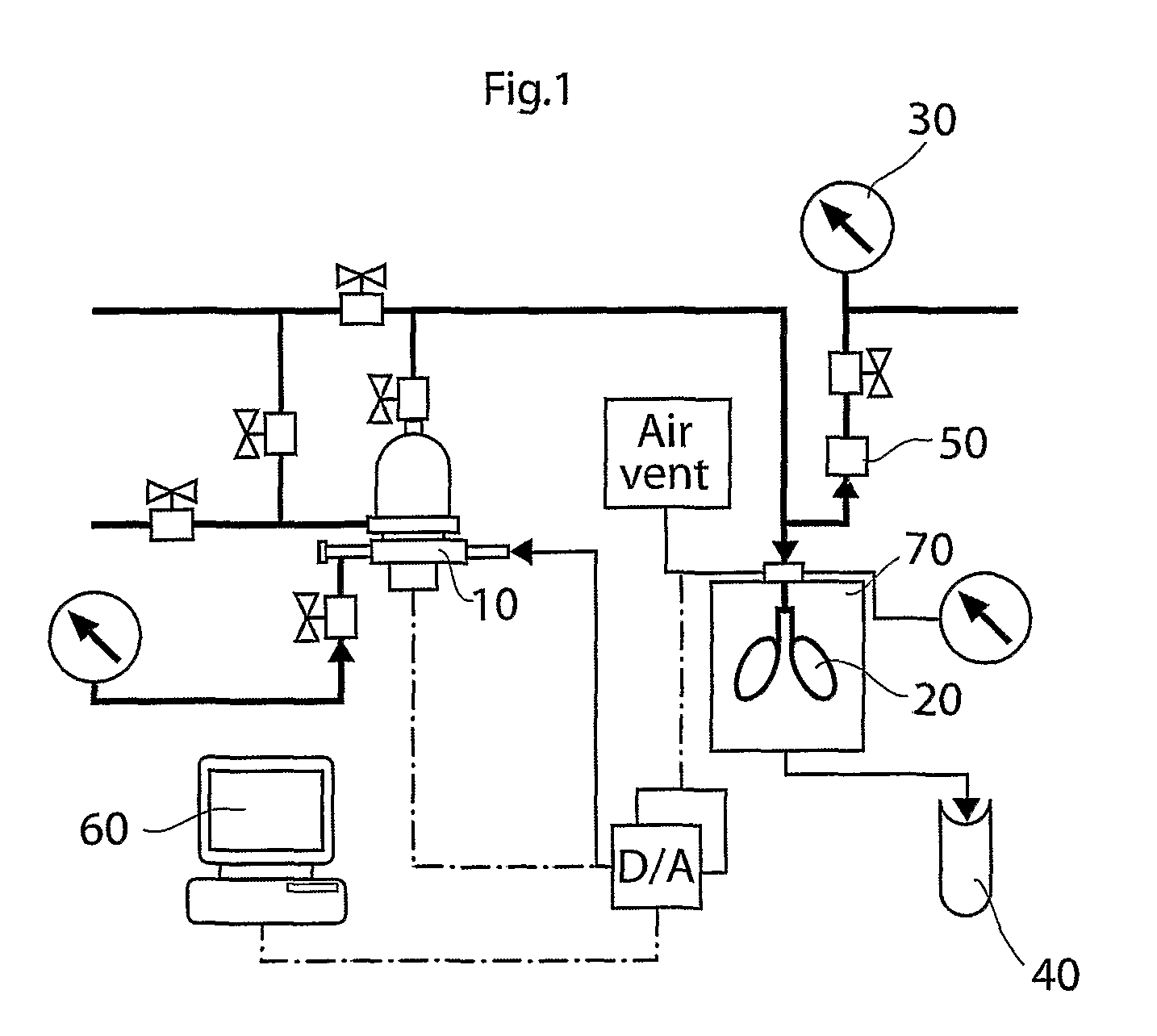Exposure system
a technology of exposure system and spherical tube, which is applied in the direction of medical atomisers, inhalators, liquid dispensing, etc., can solve the problems of inaccurate comparison of delivered dose, low level of accuracy, and inability to accurately measure the correct amount of delivery, etc., to reduce the discovery and preclinical phases of drug development, reduce the cost, and reliable discrimination
- Summary
- Abstract
- Description
- Claims
- Application Information
AI Technical Summary
Benefits of technology
Problems solved by technology
Method used
Image
Examples
Embodiment Construction
[0015]In the most general terms, the present invention relates to a system suitable for studying or predicting the interaction between a lung and an aerosolized agent comprising an aerosol generator sealingly connected to an exposure arrangement. The system is adapted to collect a portion of periodically generated aerosol from an intermittent aerosol generator in a suitable aerosol holding chamber, then provide a transport aerosol flow from the aerosol holding chamber of the aerosol generator to a flow junction and to provide an exposure aerosol flow from the flow junction for distribution to an exposure organ with breathing capacity
[0016]Thereby a residual aerosol flow is provided, which is transported away from the flow junction. The exposure arrangement also comprises a flow control function for controlling the transport aerosol flow, which in this context means the function both may comprise means for generating a predetermined flow and for controlling the direction of the flow....
PUM
 Login to View More
Login to View More Abstract
Description
Claims
Application Information
 Login to View More
Login to View More - R&D
- Intellectual Property
- Life Sciences
- Materials
- Tech Scout
- Unparalleled Data Quality
- Higher Quality Content
- 60% Fewer Hallucinations
Browse by: Latest US Patents, China's latest patents, Technical Efficacy Thesaurus, Application Domain, Technology Topic, Popular Technical Reports.
© 2025 PatSnap. All rights reserved.Legal|Privacy policy|Modern Slavery Act Transparency Statement|Sitemap|About US| Contact US: help@patsnap.com



